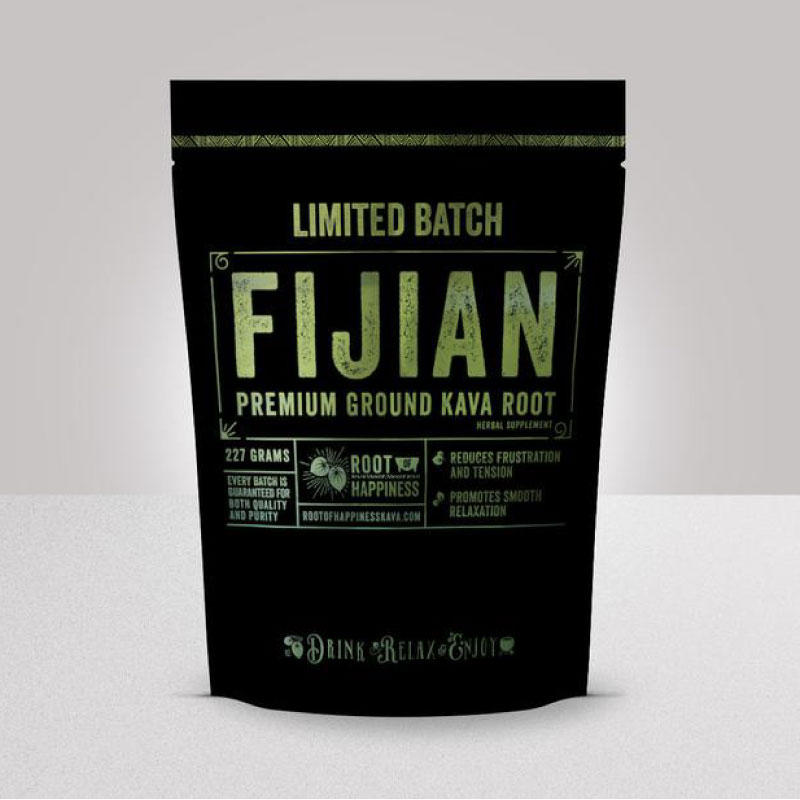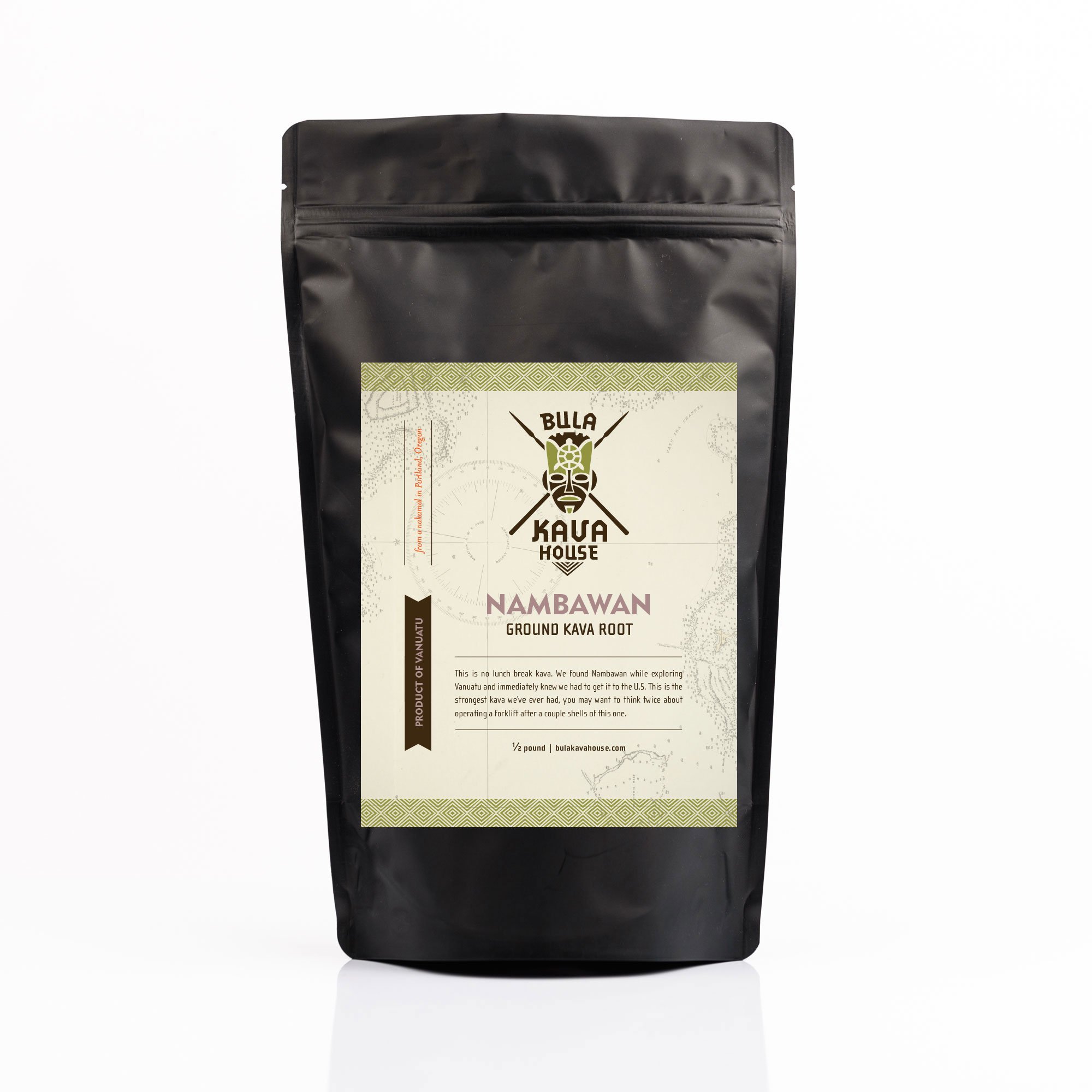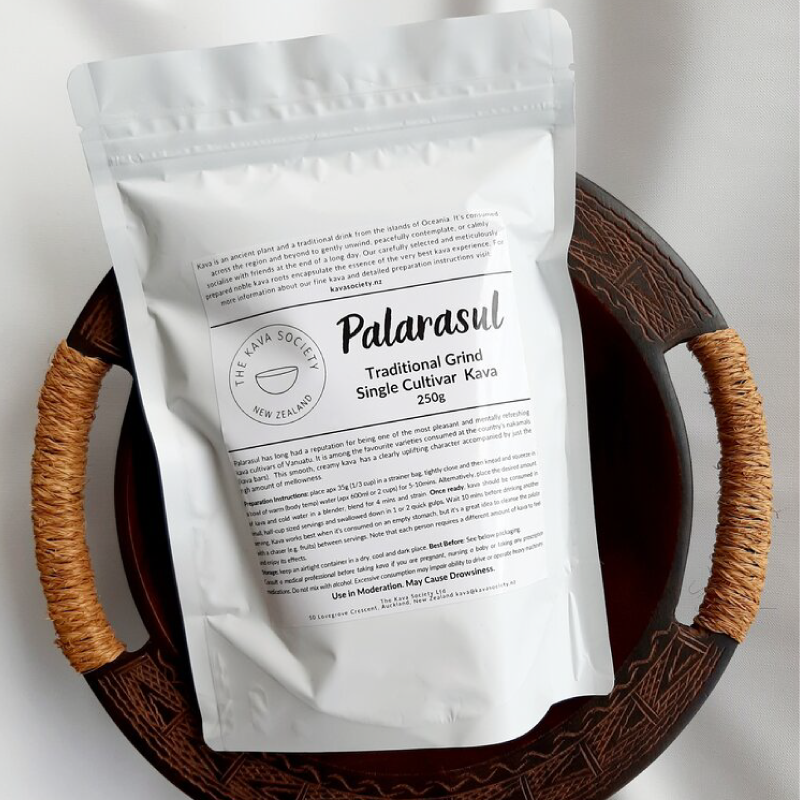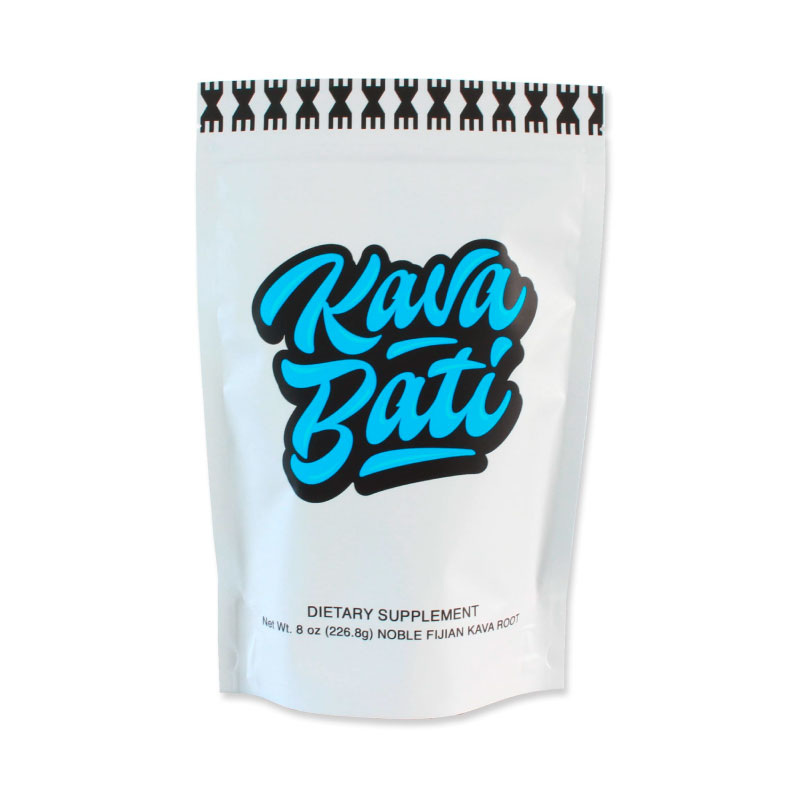Best Kava Root Powders to Try in 2020
Kava is a popular herb for inducing states of peace and relaxation.
It comes from the tropical islands of the Pacific Ocean. Here, locals source kava from friends and family, or by harvesting roots from a plot of kava grown in their own backyard.
Today, 99% of the kava we use is ordered online from passionate kava farmers living on these tropical islands.
Ordering kava isn’t as simple as you might think.
There are hundreds of different cultivars to choose from, each with a unique effect profile. Some kavas make you sleepy, other kavas give you energy and euphoria. Choosing the right one depends on what you want to get from the kava session.
More importantly, there are plenty of kava products made from low-grade tudei kava. This kava is cheaper but comes with many undesirable side-effects.
In this article, I’ll cover the best kava root powders available and provide some insight into what to look for in a quality kava root.
Best Kava Products [2020]
| Product Name | Rating | Price | |
|---|---|---|---|
 | Kalm With Kava — Farm Fresh Loa Waka |  | |
 | Root of Happiness — Fiji Kava Powder |  | |
 | Wakacon KAVA Fijian WAKA Polvo |  | |
 | Bula House — Nambawan Kava |  | |
 | The Kava Society — Palarasul |  | |
 | Kavafied — Kava BATI |  | |
| The Kava Roots — Tongan Family Reserve |  |
1. Kalm With Kava Farm Fresh Loa Waka
Specs:
Effect Profile — Balanced
Origin — Fiji
Strength — Strong
Chemocode — 463251
Kalm With Kava is one of the most popular kava brands in North America with a large and diverse selection of kava root powders to choose from.
My personal favorite is the Loa Waka kava because it’s one of the strongest kava roots pound for pound I’ve tried yet.
The effect profile of this kava is considered balanced. It starts out with a strong euphoric, heady effect that can last around 2–3 hours. Around the 3 hour mark the effects shift towards the heavy side of the spectrum.
I’ve found this kava is perfect as an evening brew. Start drinking it a couple of hours before you plan to go to bed to enjoy an evening with friends or working on creative projects. By the time you’re ready to go to bed the heavy, sedative effects will be in full force. This kava will do wonders for your sleep if used in this way.
2. Root of Happiness Superior Fijian Kava Powder (11 Year Old Kava)
Specs:
Effect Profile — Heady
Origin — Fiji
Strength — Strong
Chemocode — 436XXX
Root of Happiness is another high-end kava brand with dozens of unique kava cultivars and other kava products to choose from.
My favorite kava powder from Root of Happiness is the Superior Fijian Kava Powder. This kava has an incredibly 11.5% kavalactones by weight — which is roughly 30% higher than average.
The company claims this is the only certified organic kava on the planet — which is an impressive claim. While I can’t verify it’s the only one, this stuff really is something special. It has a notably clean effect profile — which falls more on the heady side of the spectrum.
This is a great kava option for meditation, socializing with friends, or to support creative workflows.
It’s energizing effects make it a poor option if your main goal is to promote sleep. There are better kava powders for this.
With that said, this kava is still very calming and relaxing and will provide benefits to your sleep as long as you drink this kava more than 2 or 3 hours before bed to let the euphoric effects play out.
The only downside to this kava powder is that it’s only offered in limited quantities. When the seasons root is sold out, you’ll have to wait until next season to get your hands on some more. A good second option is the standard Fijian Kava Powder by Root of Happiness.
3. Wakacon Kava Waka
Specs:
Effect Profile — Heady
Origin — Fiji
Strength — Average (Lawena), Strong (Waka)
Chemocode — 426351
In Fiji, the top of the kava roots (crown or lawena) is separated from the smaller, lateral roots of the kava plant (waka). Each part of the root has some subtle differences in their effect profiles.
The crown of the root is much milder and doesn’t have as high a concentration of the active kavalactones as the lateral roots. In exchange, this part of the root has a sweeter and more pleasant flavor.
The lateral roots of kava, in comparison, have a much higher kavalactone content and stronger flavor profile.
I love how Wakacon separates the two parts of the kava root so you can choose what matters most to you. If you want a milder, better tasting kava, the Wakacon Kava Lawena is a great option. For those who want a stronger but more bitter kava, go for the Wakacon Kava Waka.
Both of these kavas are made from the same cultivar, which is a traditional Fijian cultivar with the chemocode 426351. The effects of this kava are considered to be heady with a medium to strong potency level.
4. Bula House Nambawan Kava
Specs:
Effect Profile — Heavy
Origin — Vanuatu
Strength — Strong
Chemocode — 423615
This is my favorite heavy kava. I reserve this root for evenings when I want to make sure I get a full, restorative night of sleep.
The first hour after you drink this kava you’ll feel euphoric, slightly energized, and even a little bit giggly. It’s very relaxing and is a perfect kava to drink as you lay back and watch a movie.
Shortly after the 1-hour mark, this kava shifts towards a heavier effect profile. You’re body will feel loose and relaxed, and you’ll feel all your stresses and tension slide away. It’s one of the strongest kavas I’ve tried when it comes to stress reduction. I tend to feel the majority of my stress in the evenings as it gets closer to bed, and this kava does a great job at keeping that stress from bubbling to the surface.
About 2 or 3 hours after you’re done drinking this kava, the sedative effects start to kick in. I usually don’t make it to hour number 4 before I’, out cold for the night.
You can buy this kava in the conventional grind, as well as a micronized grind.
5. The Kava Society Palarasul Traditional Grind Single Cultivar Kava
Specs:
Effect Profile — Heady
Origin — Vanuatu
Strength — Average
Chemocode — 423156
Kava Society is a premier kava supplier out of New Zealand. They supply kava to Australia, New Zealand, Tasmania, and New Caledonia.
The Palarasul Traditional Grind kava is my favorite kava from The Kava Society — but it’s not always available. This particular kava is made from a rare kava cultivar out of Northern Vanuatu. This kava is loved for its smooth heady effect profile. It produces a pleasant feeling of clarity and focus. I keep this kava around for days when I plan on drinking in the early afternoon. I find it helps with decision-making at work, or while doing particularly mentally tasking activities. It almost serves as a nootropic in this way.
The reason this kava is so hard to find is because the Palarasul cultivar is particularly hard to grow, and yields much less kava than comparable options like Melo Melo or Borogu. In Vanuatu, this cultivar is often bought up by locals before it’s sold on the international market.
The Kava Society has done a great job securing their own selection of this kava to offer their customers. I have not seen this cultivar offered by any other kava supplier outside of Vanuatu.
6. Kavafied Kava BATI
Specs:
Effect Profile — Balanced
Origin — Fiji
Strength — Average
Chemocode — Not Listed
Kavafied was founded by Matt Masifilo — an ex NFL footballer who invented the AluBall kava maker. His brand, Kavafied, offers a variety of kava powders from Fiji, Vanuatu, and Tonga.
My favorite kava powder from this brand is the BATI kava — which is named after the warrior caste. Every Fijian town had a Bati clan which served as protection for the Chieftan. They were known for their intense strength and calm and collect composure when faced with stressful situations.
The Kava BATI is a balanced kava, but leans a little more towards the heady side of the spectrum than other balanced kavas. It’s a great kava for use during the day or when working on creative tasks.
This is one of the best low-cost kava powders you’ll find. It’s cheaper than most of the other kava products on this list but provides excellent potency for the money.
7. The Kava Roots Tongan Family Reserve
Specs:
Effect Profile — Heady
Origin — Tonga
Strength — Strong
Chemocode — Not Listed
The Kava Roots has operations in both Canada and the United States. This is one of the only sources to buy kava locally if you live in Canada.
This brand specializes in Tongan kava, but also offers kava roots grown in Vanuatu (See Paulies Blend).
Tongan kava is harder to find than kava from Vanuatu, Fiji, or Hawaii — primarily because there’s simply less room to grow crops in Tonga.
The Kava Roots managed to secure a source of kava from a small, family-owned kava farm in Tonga to supply this root powder. The farm uses organic and sustainable farming methods to preserve the local ecosystem.
This kava is very smooth, and provides a pleasant heady effect profile. It’s quite strong compared to other Tongan kavas we’ve tried.
What is Kava?
Kava (Piper methysticum) is a tropical plant species from the Pacific islands. It has a long history of use dating back several thousand years. Kava has become so widespread in the Pacific ocean nobody knows for sure where the plant first came from.
The plant is cultivated for its roots, which contain a series of powerful anti-anxiety, sedative, and muscle-relaxant compounds.
Kava root is prepared by grinding or mashing the root into a pulp and mixing with warm water (not hot). This produces a muddy tea with a bitter and spicy flavor.
People use kava in groups as an alternative to alcohol. It has euphoric and calming effects that are ideal for promoting conversation and laughter.
Many people will use kava on their own to reduce anxiety, promote sleep, or simply unwind at the end of a long day. Kava is also good for meditation, creative workflows, or before giving a speech or presentation to eliminate nerves.
How to Shop for Kava
Shipping for kava root powder can feel daunting at first — there are so many different cultivars to choose from.
Buying kava is simple if you follow these three steps:
A) Find a Reputable Brand
The most important step when shopping for kava is to find a reputable brand to choose from. It’s impossible to tell the difference between different kava cultivars once it’s ground into a fine powder and not all cultivars are going to give you positive effects.
Some kavas have compounds in them that make you feel nauseous and drunk — sometimes lasting as long as two days. We call this kava tudei kava.
Fly-by-night kava companies often buy the cheaper tudei kava and sell it under noble kava names.
The only way to avoid this issue is to go with brands that have a strong reputation in the kava space.
Here are a few solid brands to consider:
Root of Happiness
Kavafied
Kalm with Kava
Bula House
The Kava Society
The Kava Roots
Wakacon
Most of these brands offer several different types of kava to choose from.
B) Decide What Effects You Want
Once you’ve decided on a brand to go with, you’ll need to select a kava with an effect profile that matches your desired effects. Most kava suppliers will explicitly list the effect profile of each kava to help you decide.
The effect profiles of kava can be classified into three main categories:
Heady Kava
These kavas have stronger effects on the mind — such as euphoria, mental clarity, and improved focus or creativity.
Heady kavas are better for use during social gatherings or during the day because they’re less likely to make you feel sleepy. They’re also the best choice if using kava for meditation or creative work.
Heavy Kava
These kavas have stronger effects on the body, such as muscle relaxant, couch lock, and sedative actions.
Heavy kava is better for use in the evening when you plan on going to sleep within a few hours of drinking kava. They’re much more sedative in nature, and are the best choice if you’re using kava specifically to help with sleep or severe anxiety.
Balanced Kava
These kavas fall somewhere in the middle, with some heady actions, and some heavy actions.
Balanced kavas are a good all-around kava if you plan on using the same kava for socializing, creative work, stress, or sleep.
C) Choose Micronized or Standard Grind Kava
The final decision comes down to the grind of the kava. Not all kava brands will offer this choice, but it’s something to be aware of.
Most kava is sold in the standard kava grind. It’s a combination of fine-ground powder, and small fibrous clumps. This kava works perfectly fine as long as you’re using a strainer bag to keep the larger particulate out of your drink.
Micronized kava takes this to another level by grinding the powder into an extremely fine dust. This type of kava is so fine, you can use it without a strainer. It’s often referred to as instant kava (though it’s not a true instant powder).
I recommend going for the standard kava grind and either using an AluBall kava maker, or a strainer. Micronized kava costs more money and doesn’t offer a ton of advantages in my opinion. Yes, you can make a bowl of kava much faster by mixing the powder directly into the water — but despite the fine grind I always end up with fibers in my drink.
However, there are plenty of advocates for micronized kava and it remains a viable option to consider.
Kava Cultivars & Chemocodes
The primary active ingredients in kava are the kavalactones. There are 18 in total, but 6 of them make up more than 95% of the entire kavalactone content.
The ratio of kavalactones in a particular kava cultivar has a dramatic impact on the effect profiles of the root. For this reason, early kava researchers Lebot & Levesque, came up with a system of cataloging different kava cultivars by their kavalactone content — called chemocodes.
This system assignes a number to each of the primary six kavalactones:
Desmethoxyyangonin (DMY)
Dihydrokavain (DHK)
Yangonin (Y)
Kavain (K)
Dihydromethysticin (DHM)
Methysticin (M)
(Image Credit Kavaguides.com)
A kava root is then analyzed using HPLC technology to determine the ratios of each kavalactone in the plant. The chemocode is then generated based on the order of the kavalactones.
For example, the Loa Waka from Kalm With Kava has a chemocode of 463251. This means the most abundant kavalactone in the root is Kavain, followed by Methysticin, yangonin, and so-on.
Knowing which kavalactones are most abundant is useful for determining the general effect profiles of the root. For example, kava codes that begin with kavain (4) and methysticin (6) in the first three digits — such as 426 of 463 — tend to produce more pleasant effect profiles.
On the other hand, chemocodes that contain DHM (5) and DHK (2) in the first three digits often have the highest chances of causing side effects and are often the chemocodes for tudei kava cultivars.
How Much Kava Should I Use?
The dose of kava depends on the individual, but most people find somewhere around 10 grams of dried root provide stronge enough effects without going overboard.
Some kavas are stronger than others, so this dose may be too low, or too high depending on the strain.
The best way to know for sure how much kava you should take is to start with a small dose for your first session (5 grams per person), and increase the dose over time.
If you drink the first shell and don’t feel anything after about 30 minutes, make another one. Repeat this process until you get the level of effects you’re looking for — this is your dose for that cultivar.
It helps to look at the potency of different cultivars while you’re shopping:
Mild kavas usually have about 3–7% kavalactones by weight.
The average kava root provides between 8 and 10% kavalactones.
The strongest kava will have 11% or more kavalactones by weight.
How to Prepare Kava Root
There are three different methods for preparing kava root powder (plus two more using other forms of kava) — the traditional method, the AluBall method, and the Blender Method.
Each of these methods work just as well, it just depends on your preference. I like the AluBall when I’m taking my kava with me out the door, but tend to use the blender when I’m home alone. If I have friends over I’ll use the traditional method because it adds a layer of ritual to the experience that can make it quite enjoyable.
No matter which method you use, you’ll need to combine your ideal dose of kava with about 20 parts water. The kava dose is measured in grams, the water in mL.
So a standard 10 gram dose of kava should use about 200 mL of water.
In all the methods mentioned above, you’ll need to mix kava thoroughly. If doing the traditional method you should mix for at least 15 minutes. The longer you mix, the stronger the kava.
With the blender and AluBall, I find mixing for about 3 minutes is more than enough to get maximum benefit.
How Much Does Kava Cost?
Kava root generally costs between $40 and $60 per pound of kava (450 grams). Some of the more premium or rare kava cultivars can reach prices in the high 70s.
The typical dose is around 10 grams per person, so a standard 1 pound bag (450 grams) will provide roughly 45 doses.
This brings each dose to around $1.00 — which is not bad for a beverage that lasts anywhere from 4 to 8 hours. A cup of kava costs less than a coffee.
You can also buy kava in smaller, 1/2 pound bags (230 grams) that provide roughly 23 doses of kava.
Of course, the dose of kava depends highly on the individual. Some people prefer smaller doses, others like much larger doses. Additionally, many people drink kava in large batches with friends which obviously uses a lot more kava per session.
Final Thoughts: Buying Kava Online
Kava is an excellent health supplement, and alcohol alternative. With so many anxious and stressed-out individuals today, it’s no wonder kava products have become so popular.
The main reasons for drinking kava are for socializing, for managing chronic stress or anxiety, to support sleep, or to relax the muscles. I also use kava when dong creative projects to get the creative juices flowing, or to help with meditation.
When shopping for kava powders online, the most important step is to select a reputable supplier. Once you find a company that can supply high-quality kava without swapping it out for cheap and undesirable tudei strains, it will be much harder to make the wrong choice.
If you’re not sure where to start, I recommend the Fresh Loa Waka Kava from Kalm With Kava — this is my all-time favorite kava powder. I keep some of this stuff around at all times.










